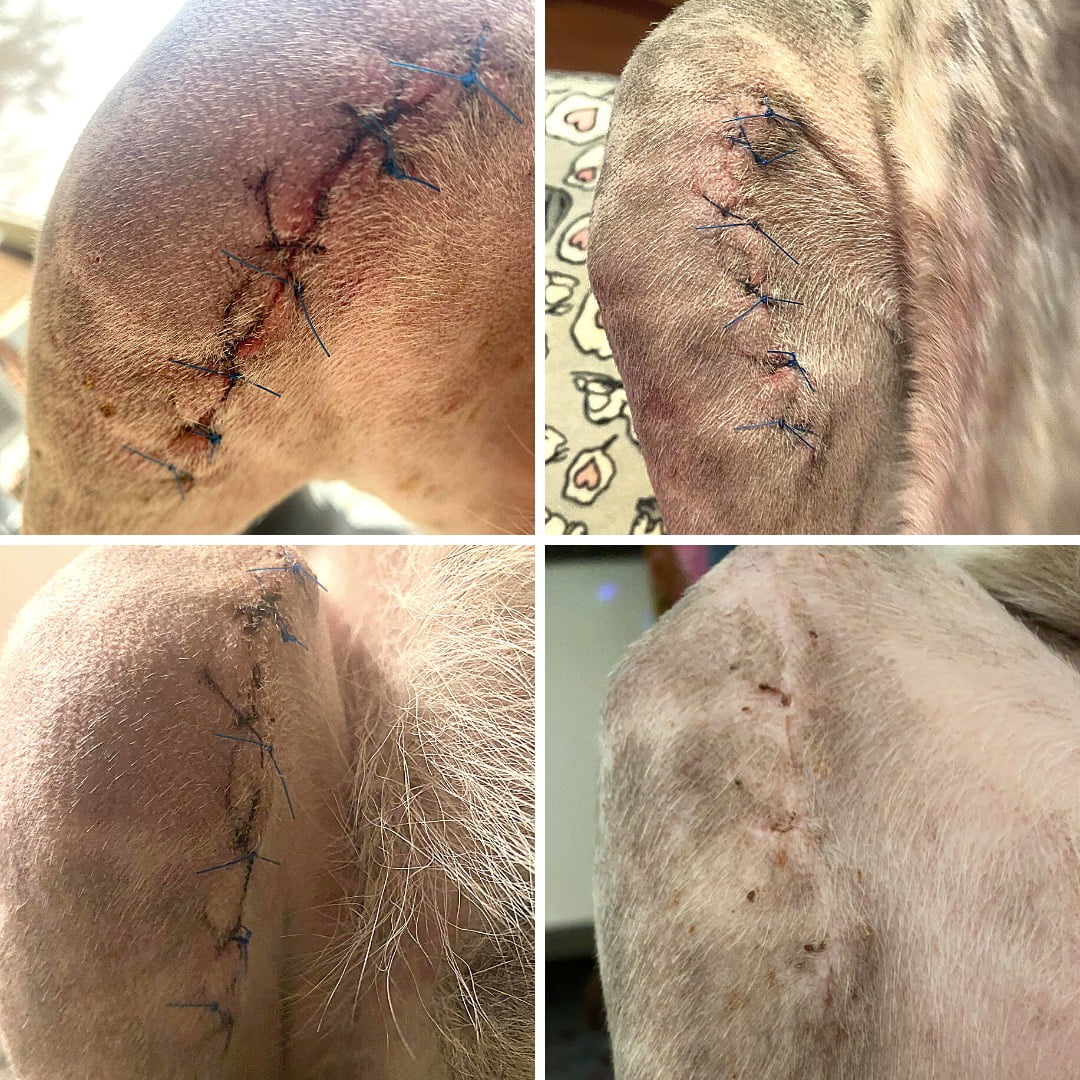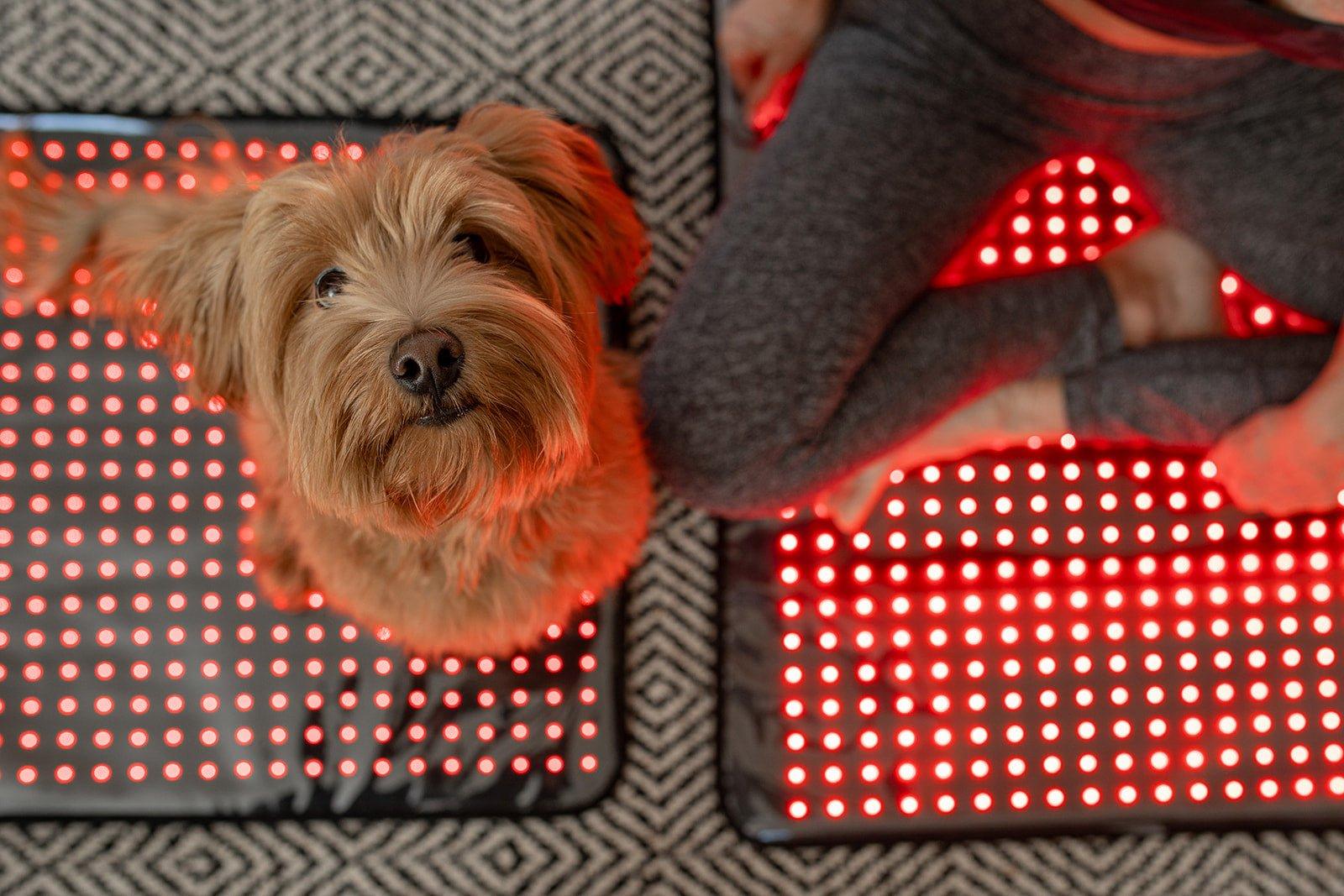Understanding Red Light Therapy Dogs: How It Works
Just How Red Light Therapy Can Enhance Your Dog's Overall Well-Being
Red Light Therapy has become a promising option for boosting canine health. This non-invasive treatment stimulates cellular task and promotes recovery in pet dogs experiencing various disorders. Many animal proprietors report visible advantages, including pain relief and enhanced flexibility. Nonetheless, understanding the potential applications and hidden systems is vital. What particular problems can it attend to, and exactly how can it be safely incorporated into a pet's treatment routines? The responses might amaze you.
Comprehending Red Light Therapy: What It Is and Exactly how It Functions
Red light therapy has actually acquired appeal in human medication, its application for dogs is progressively recognized for its potential advantages. This non-invasive therapy utilizes certain wavelengths of light, normally in the red and near-infrared spectrum, to boost cellular function. The underlying principle includes the absorption of light by mitochondria, which enhances ATP manufacturing and boosts cellular metabolism.
As a result, red light therapy advertises improved blood circulation and aids in tissue repair. The therapy is supplied through gadgets such as lasers or LED panels, which can be directed at particular locations of a dog's body. Therapy sessions are normally brief, making it a hassle-free option for pet owners.
Understanding this technology's mechanisms can help caregivers make educated decisions about their dog's health treatment. As study remains to develop, the interest in red light therapy as a complementary treatment technique for numerous canine problems is most likely to grow.

Benefits of Red Light Therapy for Dogs
Red light therapy offers numerous significant advantages for pet dogs, consisting of efficient pain alleviation and a sped up healing procedure. This therapy can boost wheelchair and versatility, making it specifically important for maturing or hurt animals. As even more family pet proprietors seek different treatments, understanding these benefits becomes increasingly vital.
Pain Relief Applications
Several canine proprietors are turning to red light therapy as an appealing option for alleviating pain in their animals. This non-invasive treatment utilizes details wavelengths of light to pass through the skin, promoting cellular task and minimizing inflammation. Dogs experiencing persistent problems such as joint inflammation, hip dysplasia, or post-surgical discomfort may experience considerable relief with this therapy. Studies suggest that red light therapy can improve blood circulation, assisting to provide crucial nutrients to affected locations, even more adding to discomfort reduction. Additionally, it might aid to lower the reliance on pharmaceutical painkiller, which often feature undesirable adverse effects. As a result, many veterinarians are significantly advising red light therapy as a secure and effective alternative for managing pain in dogs.

Accelerated Recovery Process
The benefits of red light therapy expand past pain alleviation, playing an essential role in speeding up the healing process for pets. This ingenious treatment promotes mobile regrowth, boosting the manufacturing of ATP, which boosts energy schedule for recovery tissues. Furthermore, red light therapy enhances blood flow, resulting in enhanced oxygen and nutrient delivery to hurt locations. This increased circulation not just aids in faster recovery but additionally minimizes inflammation, an usual barrier to recovery. Furthermore, the therapy urges collagen production, crucial for cells fixing and regeneration. In general, by promoting these biological processes, red light therapy considerably reduces recuperation times, enabling dogs to return to their regular activities faster and with better vigor.
Boosted Movement and Versatility
Enhanced mobility and versatility are considerable benefits of red light therapy for canines, particularly for those experiencing joint pain or tightness. This non-invasive therapy utilizes particular wavelengths of light to pass through tissues, promoting raised circulation and lowering inflammation. Therefore, pets frequently experience alleviation from pain connected with arthritis, hip dysplasia, or post-surgical recuperation. Regular sessions can stimulate mobile repair work and boost muscle feature, allowing pets to restore their all-natural range of motion. Owners have reported noticeable enhancements in their pets' ability to run, jump, and participate in tasks they once delighted in (Red Light Therapy Dogs). Inevitably, red light therapy not only helps ease discomfort yet additionally adds to an extra active and meeting way of living for pets, boosting their overall lifestyle
Problems That Can Be Cured With Red Light Therapy
Although red light therapy has actually gotten appeal in various areas, its application in vet care, especially for pets, has actually revealed guarantee in dealing with a series of problems. This non-invasive therapy technique is believed to aid in minimizing pain and inflammation linked with joint inflammation, helping older dogs restore mobility. Furthermore, it has been utilized to assist in the recovery of wounds, burns, and surgical cuts, advertising faster healing times.
Skin conditions, such as dermatitis and warm areas, may also respond favorably to red light therapy, lowering inflammation and motivating healthier fur development. The therapy can be valuable for dogs enduring from conditions like hip dysplasia, ligament injuries, and muscle mass stress. By boosting cellular fixing and improving circulation, red light therapy supplies a holistic method to enhancing the general well-being of canines, supplying relief and advertising a far better top quality of life.
The Scientific Research Behind Red Light Therapy
Red light therapy runs on the concept of photobiomodulation, which entails the application of particular wavelengths of light to boost cellular processes. These wavelengths, normally ranging from 600 to 1000 nanometers, pass through the skin and are absorbed by mitochondria, the energy-producing parts of cells. This absorption enhances ATP manufacturing, causing boosted energy schedule for cellular features.

Researches recommend that red light therapy may likewise view publisher site regulate immune reactions and support total mobile health. By using these biological devices, red light therapy provides a non-invasive therapy option that can add substantially to a pet dog's health and recovery from various problems.
Just How to Incorporate Red Light Therapy Into Your Dog's Regular
Incorporating red light therapy into a pet's regimen can be a straightforward procedure, offered that pet dog owners approach it with treatment and uniformity. First, choosing an ideal tool is fundamental, as options range from portable systems to larger panels. Owners should begin by presenting the therapy progressively, permitting their dogs to accommodate to the light exposure. Sessions can be set up for about 10 to 20 minutes, preferably 2 to 3 times a week, depending upon the pet's needs and the advice of a veterinarian
Setting a comfy setting is important; utilizing a silent room where the pet dog really feels relaxed can improve the experience. Throughout the sessions, proprietors can involve their pet dogs with relaxing voices or mild stroking to develop a relaxing environment. Keeping an eye on the dog's action is important to ensure the therapy is delightful and beneficial, inevitably assisting to enhance their general health.
Safety And Security Considerations and Measures for Red Light Therapy
When considering red light therapy for pet dogs, safety and security needs to constantly be a leading priority to ensure a positive experience. Pet dog owners should seek advice from a vet before starting any therapy, especially for dogs with pre-existing problems or those taking medicines. It is necessary to choose tools especially created for animals, as human devices might not appropriate.
Proper eye defense is essential; both the handler and the pet need to use goggles to shield their eyes from possible harm. Additionally, sessions should be kept an eye on closely to stay clear of overexposure. It is a good idea to begin with shorter sessions and slowly boost duration based upon the canine's response.
Owners need to additionally observe their animals for any type of indications of discomfort or adverse responses throughout and after therapy. By following these security considerations, red light therapy can be a secure and helpful alternative for enhancing a pet dog's well-being.
Often Asked Inquiries
How Commonly Should I Utilize Red Light Therapy on My Dog?

Can Red Light Therapy Replace Conventional Veterinary Treatments?
Red light therapy should not replace standard veterinary treatments. While it may complement therapies by advertising recovery and reducing pain, getting in touch with a vet stays crucial for thorough treatment and addressing hidden wellness concerns in dogs.
Exist Any Kind Of Side Effects of Red Light Therapy for Dogs?
Red light therapy for dogs usually has marginal side impacts, such as momentary skin redness or heat at the treatment site. The majority of pets endure the therapy well, but keeping track of for any uncommon responses is encouraged.
What Is the Suitable Duration for Each Red Light Therapy Session?
The perfect period for every red light therapy session usually ranges from 10 to 20 mins, depending upon the dog's specific needs and problem. Assessment with a vet is suggested to tailor the therapy properly.
Is Red Light Therapy Suitable for All Pet Dog Breeds?
Red light therapy is usually suitable for a lot of canine types. However, private wellness conditions and sensitivities might influence its applicability. Consulting a veterinarian guarantees the therapy is helpful and safe for every specific pet dog.
Numerous pet dog owners are turning to red light therapy as an encouraging option for easing pain in their pet dogs. Full Report Enhanced flexibility and adaptability are significant benefits of red light therapy for pet dogs, particularly for those experiencing from joint discomfort or rigidity. Red light therapy operates on the principle of photobiomodulation, which entails the application of certain wavelengths of light to boost mobile processes. Research study suggests that red light therapy can advertise healing, minimize inflammation, and reduce pain in pet dogs. Red light therapy for pets typically has very little side results, such as short-term skin inflammation or heat at the treatment website.